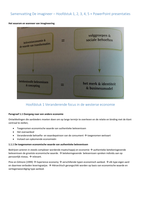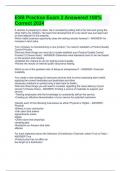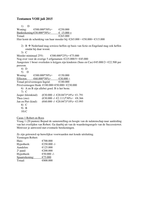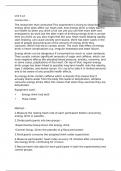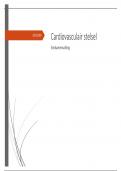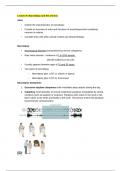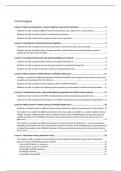Topics in translation studies
13/10: les 2
Pseudotranslation
Bassnet: the relationship between “the original” and the translation is complicated
Toury: the first systematic study, based on his book Descriptive Translation Studies
Gurcaglar: she tries to broaden the scope
Bassnet
It’s very difficult to define what a translation is.
The reader itself is involved in identifying the translation.
There are no objective criteria to determine whether a text is or is not a translation, it’s
about how the readers perceive the translation. = the role of the reader is very important
Pseudo-translators don’t base themselves on one text, but on several texts. = the notion of
“the original” gets complicated (There is not one original version of “1001 nights” because
new stories got added later on in the 19th century).
Self-translation of Samuel Becket: he translated himself into different languages, he also
changes his poems when he translates, it’s not sure where translation starts and where it
ends. = there are “multiple originals”
Travel-writing uses certain pieces of dialogue and presents it as translations but it’s not clear
where the original is from (similar to American movies about Nazis like Inglorious Basterds
where they speak English instead of German, however Tarantino tried to parody this
phenomenon of pseudo-translation in movies).
“fictitious translation” is used instead of “pseudotranslation”
Cervantes claimed that he translated “Don Quixote” from an Arabic manuscript.
How do we compare pseudotranslations to the original?
While reading/watching fiction, we suspend our disbelief. We do this with
pseudotranslations as well. = collusion
Scottish people claimed pseudo-translations from Gaelic.
“The Painted Bird”: the reverse case where a work was presented as an original work, but
turned out to be a translation = plagiarism
Phenomenology: studies reality how it is interpreted/perceived, not how it is
Toury
It depends how you read the pseudotranslation.
Descriptive Translation Studies: started in the ‘80s, before they used to look at how
faithful the translation was, the DTS pushed the source text out of the picture and
started looking at the target text and target culture, how does the translation
function within a certain culture = functionalist approach
Criticism: we need to start looking more at the source text/culture as well!
“assumed translation”: if a text functions as a translation/if it’s assumed to be a
translation, it will be treated as a translation. However, this can change at a certain
time.
Pseudotranslations function as translations = they tell us something about the
reader’s expectations, how translations function in that society, certain people
believe that something is a translation because of footnotes, etc.
13/10: les 2
Pseudotranslation
Bassnet: the relationship between “the original” and the translation is complicated
Toury: the first systematic study, based on his book Descriptive Translation Studies
Gurcaglar: she tries to broaden the scope
Bassnet
It’s very difficult to define what a translation is.
The reader itself is involved in identifying the translation.
There are no objective criteria to determine whether a text is or is not a translation, it’s
about how the readers perceive the translation. = the role of the reader is very important
Pseudo-translators don’t base themselves on one text, but on several texts. = the notion of
“the original” gets complicated (There is not one original version of “1001 nights” because
new stories got added later on in the 19th century).
Self-translation of Samuel Becket: he translated himself into different languages, he also
changes his poems when he translates, it’s not sure where translation starts and where it
ends. = there are “multiple originals”
Travel-writing uses certain pieces of dialogue and presents it as translations but it’s not clear
where the original is from (similar to American movies about Nazis like Inglorious Basterds
where they speak English instead of German, however Tarantino tried to parody this
phenomenon of pseudo-translation in movies).
“fictitious translation” is used instead of “pseudotranslation”
Cervantes claimed that he translated “Don Quixote” from an Arabic manuscript.
How do we compare pseudotranslations to the original?
While reading/watching fiction, we suspend our disbelief. We do this with
pseudotranslations as well. = collusion
Scottish people claimed pseudo-translations from Gaelic.
“The Painted Bird”: the reverse case where a work was presented as an original work, but
turned out to be a translation = plagiarism
Phenomenology: studies reality how it is interpreted/perceived, not how it is
Toury
It depends how you read the pseudotranslation.
Descriptive Translation Studies: started in the ‘80s, before they used to look at how
faithful the translation was, the DTS pushed the source text out of the picture and
started looking at the target text and target culture, how does the translation
function within a certain culture = functionalist approach
Criticism: we need to start looking more at the source text/culture as well!
“assumed translation”: if a text functions as a translation/if it’s assumed to be a
translation, it will be treated as a translation. However, this can change at a certain
time.
Pseudotranslations function as translations = they tell us something about the
reader’s expectations, how translations function in that society, certain people
believe that something is a translation because of footnotes, etc.

